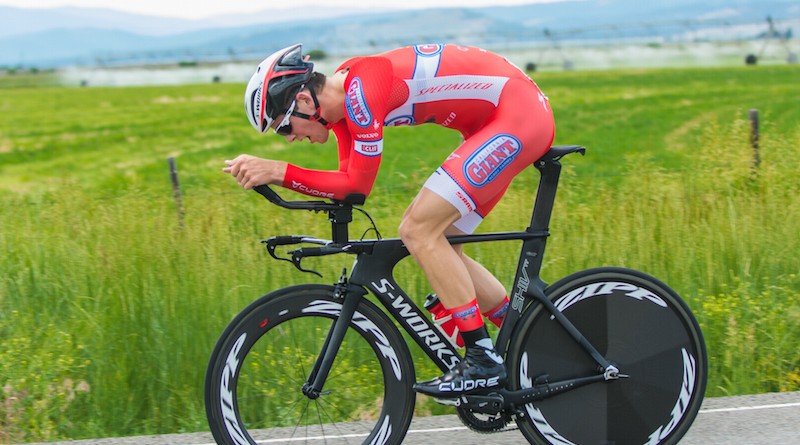Build Bike Endurance Like A Pro

By Peter Vollers
Spring is cruel. On the first 60-degree day of the season, it’s tempting to pull on shorts and a jersey, hop on the bike and, after a long winter, get lost in the euphoria of spinning wheels on pavement.
On those first rides, we tend to go out long and hard. Why not? We’ve been skiing all season and our legs feel great. And the first century ride is only 45 days away.
Then, our bodies start to punish us. A hamstring gets pulled, a cough starts, after an hour you’re shivering because you didn’t dress warmly enough and your body rebels. In short, you weren’t prepared.
While some people don’t ride at all in the winter. Others obsessively spin indoors competing with strangers on Zwift. I like to take a balanced, and somewhat old school approach.
Sure, when I was younger and racing on the World Junior Circuit I’d hammer it out. But now I’m 48, I have a job, a wife and two kids. Rather than focusing my life on staying fit, I like to make staying fit part of my life.
Here’s how I do it.
Build strength
You can spin all winter and be in great aerobic shape but after your first 30-mile ride, you feel like a train wreck. You back aches, your neck hurts, and your arms are sore. By building strength in the winter months, you will not only be a stronger rider and have more endurance but you’ll be less prone to injuries come spring.
I like to set out a schedule of 40 minutes of strength training in the gym, three days a week, on Mondays, Wednesdays and Fridays. The workouts focus on arms, legs and core. As you start to go harder, it’s important to add reps, not weights.
I warm up spinning or running on the treadmill for about 10 minutes or until I am glistening with sweat. Then, I do three sets of 20-30 reps each, setting the weight so I do each set to near exhaustion. The first set may be 30 reps, the second one maybe 25 and the third might be 20 reps or a few less.
- Legs: Legs lifts, leg presses leg extensions, leg curls, calf presses
- Core: Abs workouts, back strengthening, neck raises
- Arms: Work your arms and upper body using light weights, bench presses, and free weights
When I was younger, I used to just wreck myself in these workouts I went so hard, but in my late thirties I tore some quadricep fascia tissue and had to pretty much do nothing for about six weeks, so now I only go to the point in each set that I’m near exhaustion and not quite there. Better to survive the workout a little underdone than overcook it and have a major setback.
Spin for intensity
On Tuesdays, I spend 40-45 minutes on the indoor trainer. The first 15 minutes is an easy spin to warm up (again, get your heart pumping until you start to glisten with sweat). Then the rest of the workout centers on building intensity.
This is increasingly important as we get older. If you take a month off from training at top intensity, it can take up to two years to build back to the level you were at before.
So often in cycling—whether you’re attacking, bridging between groups or pushing hard up a hill—you’re toggling above and below anaerobic threshold so that’s where I like to train. A tried and true old school workout is to do one-minute intervals with minimal recovery in between. Try two sets of five one-minute intervals as follows:
Each set:
- One minute interval with the first 40 seconds at a hard pace (for me, between 400-500 watts, if you are starting out, aim for 200-300 watts) and the last 20 seconds all out (over 500 watts, or over 300 watts if you are still building)
- 30 seconds rest (desperately recovering and barely pedaling)
- Repeat four more times
Do two of these sets, resting for 3 minutes in between so you’re fully recovered aerobically, and then warm down for 10-15 minutes. With the warm up, two sets of intervals and warm down, you get a solid workout in 40-45 minutes.
This is a short but extremely effective workout that will build or maintain your intensity conditioning and ability to recover depending on how hard you’re capable of going during the respective workout. If you’re not feeling particularly great that day, back off the watt ranges a bit or just do one set. The key is to use this workout to at least maintain that valuable intensity you worked so hard to build.
Get outdoors
If you want to make fitness part of your lifestyle it has to be fun. When I organize events, I spend as much time thinking about the after party—the place where the tribe comes together and bonds—as I do about the routes.
I take the same approach to training: if you don’t make it social and fun, it’s going to become a chore.
For years, I’ve been part of a Woodstock Wednesday night gravel road ride group that does a pretty fast and always hilly gravel ride during the summer and fall months. And, recently, we started a year-round, any-conditions Thursday Night Adventure Ride (we call it TNAR, with a silent “T”) that goes out on fat bikes with headlamps. It’s not a race or even a hard ride but it’s a whole lot of fun. It keeps me on the bike all winter and helps with bike handling too. Come spring and summer, we switch to mountain bikes for this ride.
Last, on weekends I try to get out for a longer ride—on my fat bike, road bike or mountain bike depending on the conditions. I don’t focus as much on miles as I do on time. I start out with an hour and then build up with gradual 20-minute increments for each ride. Most importantly, take it slowly. If anything, hold yourself back on those first few rides and finish feeling almost fresh. Again, always better to underdo it in the beginning and let yourself ease into it. There’s plenty of time to push harder once you have some conditioning.
Build up to a century
Don’t be intimidated and think you can’t ride 100 miles—if you can ride 50 miles, you can ride 100. The key there is to think about pacing yourself by time, not distance.
For most riders, a century ride will take between 5 and 7 hours. If you jump in with the lead pack, skip the food and hydration stops and hammer the first half, rigor mortis is going to set in pretty quickly. Instead, break the ride down into segments. For the first two and a half hours, hold yourself back.
Ride at a comfortable pace, eat like a pig (and that’s important, if you want to finish) at every food stop. I like to go into a long ride with a hearty breakfast of carbs, protein and a little fat—eggs, whole grain toast, potatoes and bacon. Unlike sugars, which give you an energy spike, then a lull, those things stay with you.
I also believe salt and fats are important to help prevent cramping and retain fluids. I’ll stop and munch on a bag of chips for the first half of the ride.
Then, on the last quarter you can start to go all out and ride harder. That’s when you can indulge in sugars (I even like to plan my training rides to stop off at Red Hen in Middlesex or the Richmond Book Store for an espresso and a piece of cake—cycling gives me a license to indulge, too.)
Lastly, think of that century ride or that race not as the be-all and end-all goal or the ultimate test of your fitness level but as a check-in point. Building strength as we get older isn’t about sudden improvements but long steady gains. It’s like the reverse of peeling an onion: you add layers and layers of fitness until all of a sudden you realize you have an onion.
As we approach middle age, it’s so easy to slip into becoming overweight and to have our families or jobs fill up our days so much that we don’t work out. Remember to make time for yourself to stay in shape.
You’ll not only be able to do that one century ride, you’ll do many more. And you will be a better husband or wife, father or mother, worker or friend because of it.
Peter Vollers is a former NCAA cycling champion and member of the World Junior Cycling Team. He has coached current pro riders Ansel Dickey and 2015 NCAA champion Brendan Rhim. He lives and practices law in Woodstock, where he also runs Overland Adventure Tours and puts on the Overland Adventure rides and other events.



